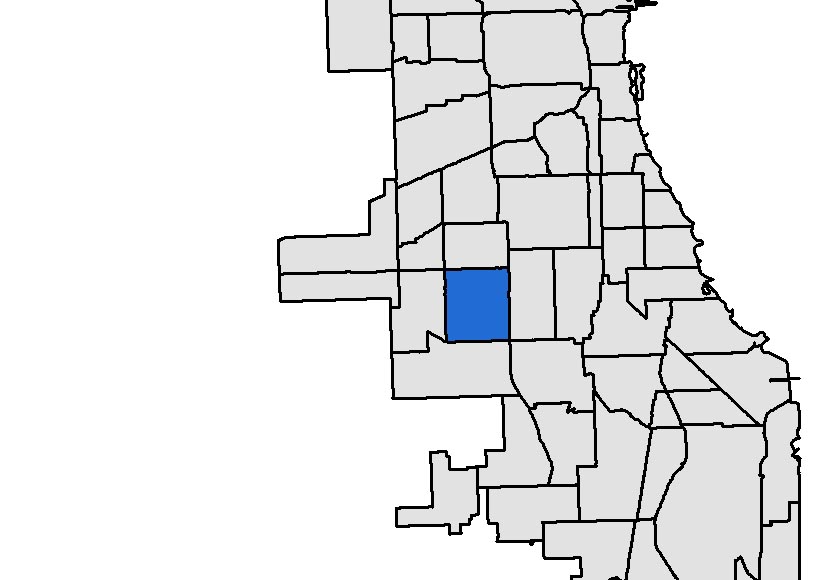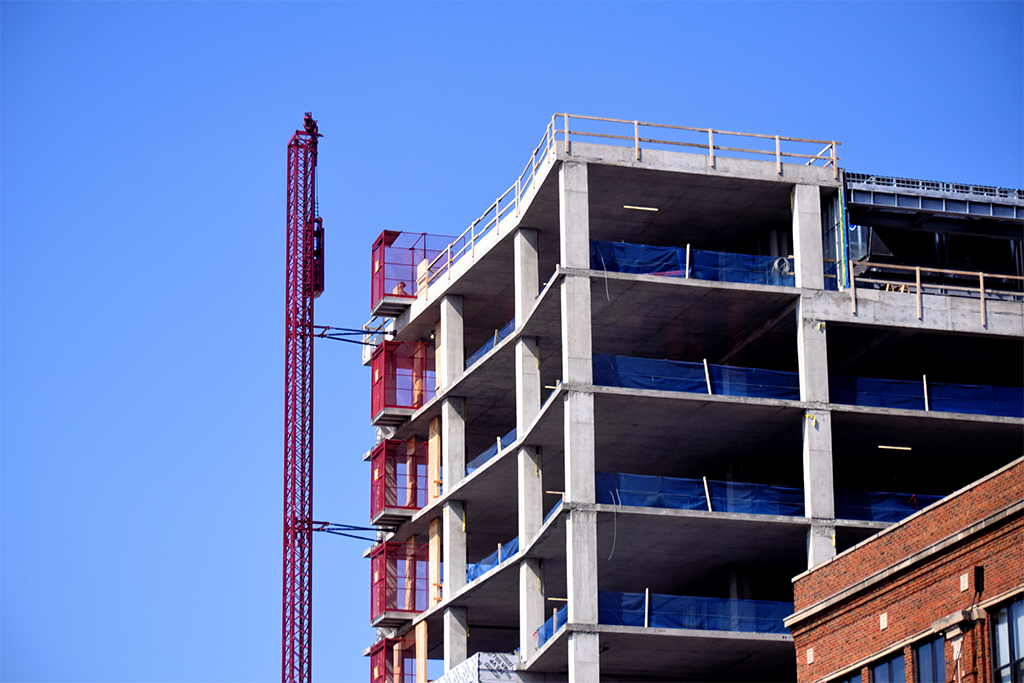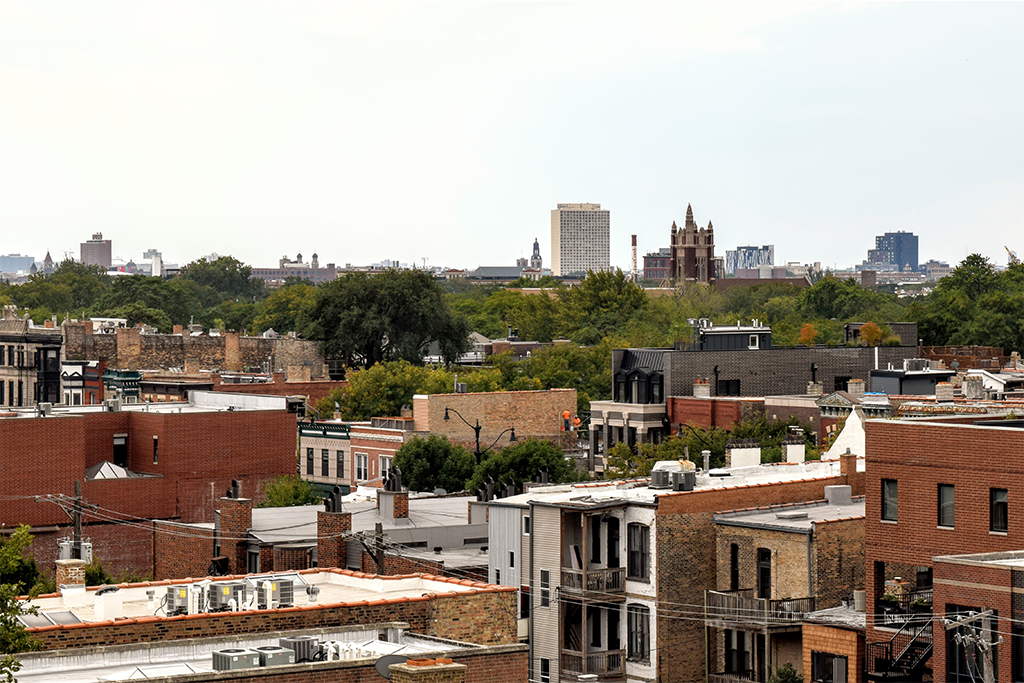One of the goals of the Institute for Housing Studies at DePaul University is to work with the staff, faculty, and students at DePaul in order to foster cross-disciplinary learning about community development as it pertains to affordable housing and, in doing so, to further the missions of both the Institute and the University.
This post was written as part of a project by DePaul University journalism students. The students worked with IHS staff and Chicago housing stakeholders to explore the challenges facing low-income households in need of affordable housing within different Chicago neighborhoods.
Even as the economy begins to recover from the recession that began in 2007, the housing crisis that helped cause it continues to play out in many areas of Chicago. The Chicago Lawn community area — bounded by 59th Street and 75th Street on Chicago’s southwest side — was hit particularly hard with a high rate of foreclosures throughout the crisis, forcing many residents to transition from homeownership to renting.
According to a report on rental housing affordability released by DePaul University’s Institute for Housing Studies (IHS) earlier this year, not only did the number of renter households in Chicago increase by more than 10 percent between 2007 and 2011, this increase was accompanied by a decline in household incomes for Chicago residents while rents stayed the same or rose. The same report found that the number of rent-burdened households, or households spending more than a third of their income on housing, had increased nearly 14 percent between 2007 and 2011 in Cook County across all income groups.
One Chicago Lawn resident, Maria Salinas, has experienced these changes firsthand. The single-family home her family had been renting went into foreclosure early in 2013.
“The house that we’re in now … it was in foreclosure, and now they’re trying to sell it,” Salinas said. “[The owner] owed way more than it was worth.”
According to data from IHS, Chicago Lawn had the second-highest level of foreclosures in 2012 among Chicago’s 77 community areas – five out of every 100 residential parcels, or more than twice the rate as the city overall. The neighborhood has ranked among the top six community areas in foreclosure rates every year since 2008.
All of these factors have caused the demand for affordable rental units in Chicago Lawn to increase over the last five years. According to IHS, the supply of rental housing affordable to lower-income households has not kept pace with growing number of lower-income renters in Chicago or suburban Cook County. The Institute calculates that at least 31 percent of households in need of affordable housing in the Chicago Lawn area are not able to meet this need with the supply of affordable rental units available.
Community-based organizations like the Southwest Organizing Project (SWOP) work in Chicago Lawn and other southwest Chicago communities leveraging existing neighborhood assets in order to stabilize neighborhoods block by block.
“This is not about dealing with vacant properties, or crime or bad schools. It’s not about fixing one thing,” said David McDowell, senior organizer at SWOP. “This is about how to bring a neighborhood back.”
Housing is just one of the areas of focus for SWOP, but according to McDowell – it’s a key part of improving other challenges facing Chicago Lawn.
Salinas and her family will be forced to move because of the foreclosure on their rental unit, and their rent is likely to go up as a result. They currently pay $717 per month in rent, but since they started looking for a new apartment they’ve been faced with rents in the $1,000 to $1,200 range.
These struggles are familiar to residents in the Chicago Lawn neighborhood. In 2000, 67 percent of renters there paid less than $750 per month and only 5 percent paid more than $1,000, according to data from the Chicago Rehab Network. In 2010, renters paying less than $750 dropped to 39.5 percent, with 25.6 percent of renters paying more than $1,000.
With the rising cost of rent, it’s no surprise that the economic climate in Chicago Lawn has been positive for realtors working in the area, like Duane Feaster.
“With the economic crisis, leasing and renting has skyrocketed. Folks are leaving their homes and renting now,” Feaster, a leasing agent with Kale Realty, said. “They say the housing and real estate industry isn’t doing well, but leasings are still booming.”
Feaster sees many trying to move to the Chicago Lawn neighborhood to leave Englewood and West Englewood, a community area that has experienced high levels of crime.
Like West Englewood, Chicago Lawn struggles with crime, ranking twenty-second out 77 neighborhoods in violent crimes per capita and tenth overall in number of such crimes, according to City data compiled by the Chicago Tribune.
McDowell said crime, as well as struggling schools, are two issues contributing to Chicago Lawn’s poor housing market for potential homeowners. These issues have created an overall disinterest in buying property in the area.
“You can’t fix schools if families are forced to leave the neighborhood because of foreclosure, and the crime rate won’t go down if there are vacant buildings and limited educational opportunities,” he said. “It’s all interrelated.”
A difficult job market – 11.9 percent unemployment in the neighborhood as of 2010, according to data from the 2006 to 2010 American Community Survey (via the Chicago Tribune) – adds additional strain to residents struggling to keep their homes out of foreclosure or to make increasing rent payments.
Salinas’ brother Antonio has been unable to find a job for weeks after leaving community college to help his family. He has seen many of his friends leave Chicago Lawn to find a job.
“I seem to see a pattern where, when you get a job, you seem to move out of the neighborhood,” he said. “With other people that graduated [college], they just move out.”
Tina James, director of commercial technology services at Greater Southwest Development Corporation, works to improve with quality of life on the southwest side through business and residential development, said housing concerns must be resolved before the area’s job market can move forward and people like Antonio can find jobs.
“No matter what we do with the business sector, it doesn’t matter until we solve the residential problems,” she said “To be honest, we’re having trouble attracting for-profit businesses right now,” James said. “[The number of] Foreclosures give you a good indication of whether the families in the area have any disposable cash.”
But despite its problems, McDowell and the rest of the Southwest Organizing Project are determined to change the overall dynamic of Chicago Lawn. McDowell said the organization is currently looking to rehabilitate approximately 100 units within a 3-square-mile area that’s been hit the hardest with vacant homes. They also plan to take steps to improve crime rates and schooling because they believe all three are necessary for a healthy community.
“We’re working to build a safer and a stronger neighborhood,” he said.
As for Salinas, she plans to continue the search to find a new apartment. Rising costs and many landlords’ distaste for big families have made the process difficult in the past and will continue to do so, but she knows it’s necessary for her and her family’s sake.
“It [apartment hunting] was the biggest headache of my life. Ever,” she said. “And I really never wanted to do that again, but unfortunately we have to do it.”
Written by Haley BeMiller, Courtney Jacquin and Jakub Rudnik in collaboration with IHS staff members. To be notified about new blog posts and to give us feedback, follow us on twitter, like us on Facebook, or join our LinkedIn Group.






